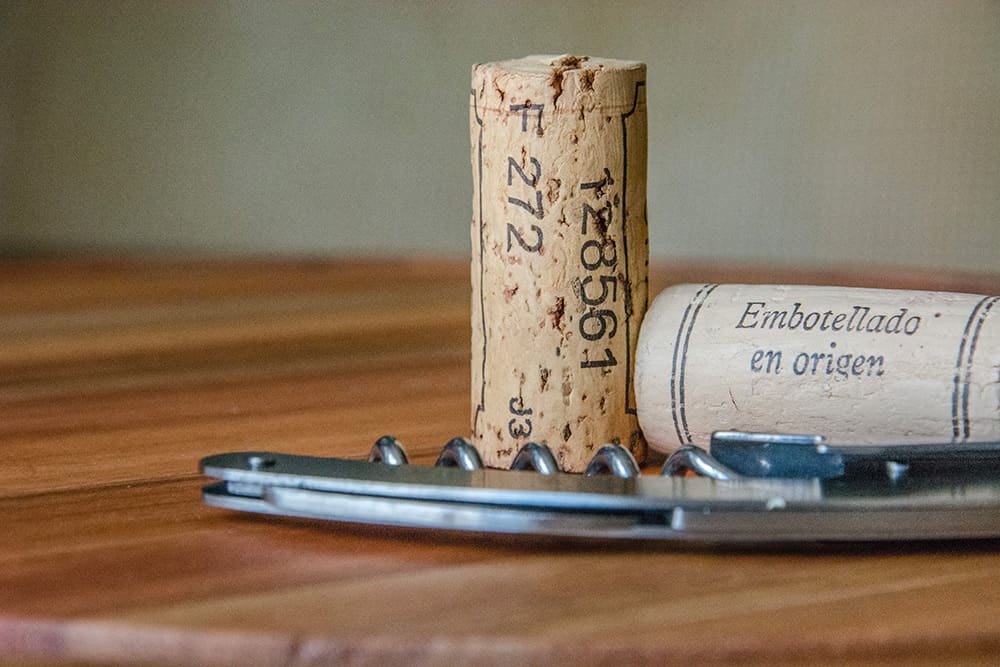When you open a bottle of wine, cut the capsule and tinfoil below the tip with a knife; use a clean cloth to remove the mold which usually forms under the capsule; draw the cork and then carefully clean the lip of the bottle inside.
Don’t choose fancy corkscrews with all kinds of levering gadgets. These are all right for young wines not for the old ones, where the cork is apt to break or crumble into powder. The best is the old-fashioned T-screw: look for one with a long stem (great wines have long corks) which is rounded and not sharp enough to cut the cork.
If the cork should break or turn out to be old and powdery, it can be got out by leverage: insert the screw delicately, slightly sideways; set the bottle on its side, so that the pressure of the wine is against the inside face of the cork, then turn the screw gently, using some leverage to lift the bottom of the cork toward the upper side of the bottle.
One occasionally finds a defect in even the finest of corks: sometimes an invisible vein which, with age, is liable to deteriorate and turn
The wine will then have an unpleasant corky taste and smell and the cork will smell of itself and not of the wine. In a restaurant, the waiter should smell the cork and then bring it to you; and the reason why a little wine is poured first into the host’s glass is so that he may make sure the wine is not corked., before it’s offered to his guests.
Sometimes the infection is so slight that only the first glassful is spoiled; therefore, when you open the wine at home, it is worth putting the bottle aside to see if it will afterward be fit for you yourself to drink. In a
Adapted from “New encyclopedia of wines & spirits”











